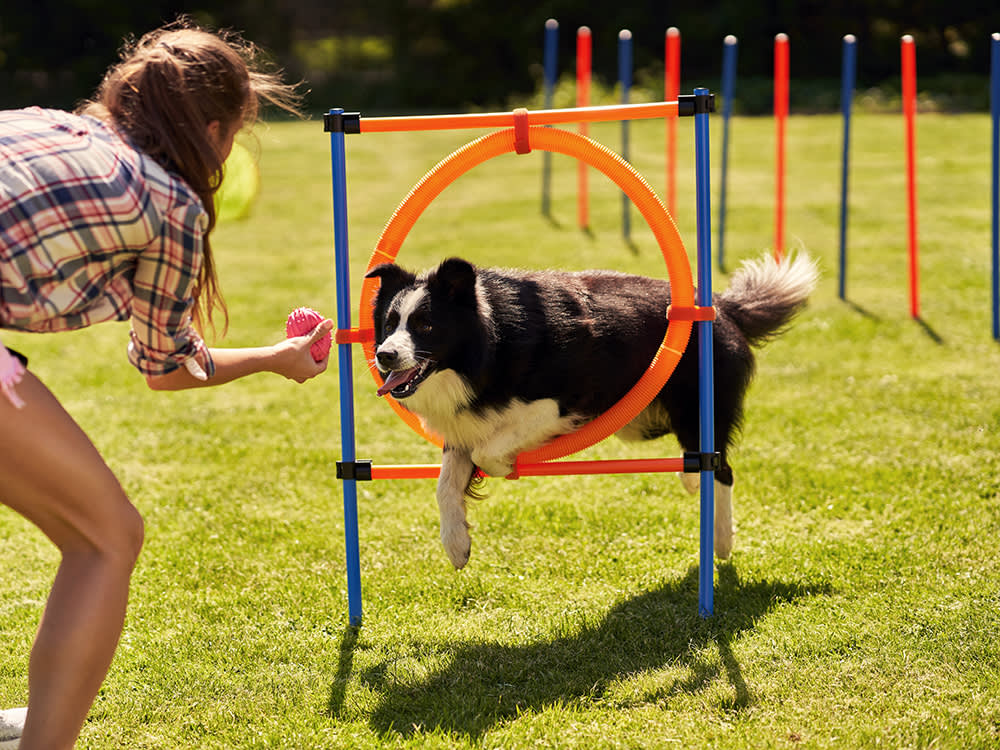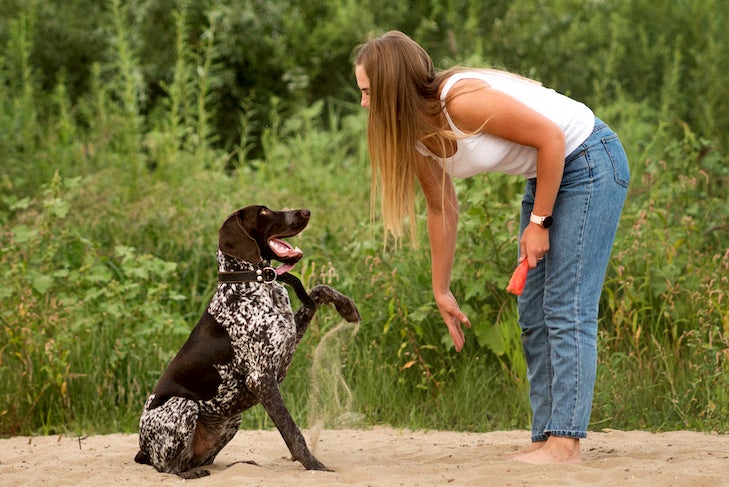Step-by-Step Approach to Dog Training: Simple Tips for Every Dog Owner
Step-by-Step Approach to Dog Training: Simple Tips for Every Dog Owner
Blog Article
Novice's Overview to Successful Canine Training in your home
Successfully educating a dog at home calls for a nuanced understanding of canine actions and effective communication strategies. Developing clear training goals, making use of premium incentives, and maintaining uniformity across household members are crucial components. Incorporating training into day-to-day regimens can boost both interaction and retention.
Understanding Dog Behavior
Recognizing pet dog habits is essential for effective training and cultivating a harmonious connection in between human beings and their canine companions. Dogs communicate largely through body language, vocalizations, and face expressions, making it vital for proprietors to translate these signals precisely. Recognizing behaviors such as tail wagging, roaring, or shrinking can give insights into a dog's psychological state and intents.

Usual behavior concerns, such as hostility, stress and anxiety, or excessive barking, often stem from misconceptions or unmet needs. Observing and attending to these problems immediately can protect against escalation and make sure a positive training experience. By cultivating a deep understanding of pet actions, proprietors can tailor their training approaches to fit their canine buddies, inevitably leading to a well-behaved and satisfied family pet.
Important Educating Devices
A well-appointed training room can significantly improve the performance of canine training in the house. Essential training devices make sure that both the pet dog and the trainer can participate in effective sessions that cultivate discovering and bonding.

Investing in a strong chain and a comfy, well-fitting collar or harness is important for security and control. These tools aid develop boundaries and ensure the pet remains secure throughout training. Furthermore, an assigned training location, without distractions, aids focus for both the pet and the instructor.
Training help such as training pads, cones, or agility tools can also enhance the experience by presenting selection and difficulties. Last but not least, having a note pad or digital application for tracking development can be very useful, enabling you to keep in mind successes and locations for improvement. Using these crucial tools will certainly produce a favorable training environment and lay the structure for reliable understanding.
Creating a Training Regimen
Developing a consistent training regimen is necessary for efficient canine training at home. A well-structured regular not only assists in strengthening wanted actions however also gives your pet dog with a feeling of safety and security and predictability. To create an effective training regular, start by recognizing details training goals, such as basic commands, chain walking, or house-breaking.
Pick a marked time daily for training sessions, preferably when your dog is alert and receptive. Sessions ought to be short, roughly 5 to 15 minutes, to preserve focus and stop fatigue. Consistency in timing and atmosphere will certainly improve your dog's knowing experience.
Integrate training right into daily activities to enhance skills. As an example, technique commands during strolls or mealtime, which integrates learning into all-natural routines. In addition, continue to be adaptable and change the routine as required, suiting your pet dog's energy levels and state of mind.
Favorable Reinforcement Techniques
Positive moved here support strategies are basic to reliable pet training, advertising preferred behaviors through incentives instead of penalty. see this site This approach uses positive stimulations, such as treats, praise, or play, to motivate canines to repeat particular actions. The foundation of this method is timing; benefits should be offered right away complying with the desired habits to create a clear organization.
When executing favorable reinforcement, it is essential to pick benefits that are motivating for your pet dog. High-value treats, such as tiny pieces of hen or cheese, can be especially effective throughout training sessions. Additionally, differing the benefits can maintain your canine's rate of interest and enthusiasm.
Begin with simple commands, like "rest" or "stay," and slowly progress to a lot more complex jobs. Uniformity is key; make sure that all relative make use of the exact same commands and incentive systems to avoid confusion.
Additionally, it is important to remain person and avoid stress. Canines, like human beings, learn at their own rate. By fostering a helpful training setting through positive support, you can enhance your canine's discovering experience while strengthening the bond between you and your fuzzy friend, preparing for successful training results.
Typical Educating Challenges
While training a dog in the house can be a fulfilling experience, it usually includes a collection of usual challenges that can evaluate Your Domain Name both persistence and uniformity. One prevalent problem is diversion. Canines might end up being quickly sidetracked by sounds, movements, or also scents in their environment, making it tough to keep their emphasis throughout training sessions.
One more difficulty is disparity in commands and support. It can prevent and puzzle the canine development if family members make use of various hints or benefits. Establishing a unified approach is important for effective communication.
Additionally, pets can experience frustration or stress, especially if they do not recognize what is anticipated of them. This can cause undesirable behaviors, such as barking or eating.
Finally, the timing of support is essential (Dog training). Postponed benefits can diminish the performance of favorable reinforcement, as canines may fall short to link the behavior with the incentive
Getting over these difficulties requires dedication, clear communication, and an organized training strategy. Acknowledging and attending to these common barriers will lead the way for a more enjoyable and effective training experience at home.
Verdict
In final thought, successful canine training at home necessitates a thorough understanding of canine habits and effective interaction methods. By developing clear training goals and making use of premium treats alongside positive support, the training process becomes a lot more fulfilling for both the pet dog and the instructor. Consistency, persistence, and adaptability are important elements that promote learning. Eventually, incorporating training right into day-to-day regimens boosts the bond between canine and owner, making the experience both satisfying and effective.
Establishing a consistent training regimen is essential for efficient pet training at home.Favorable support strategies are essential to effective dog training, advertising preferred behaviors via rewards rather than penalty (Dog training). By cultivating an encouraging training setting with positive support, you can enhance your pet's understanding experience while enhancing the bond in between you and your hairy friend, laying the groundwork for successful training outcomes
In verdict, effective canine training at home necessitates a comprehensive understanding of canine actions and efficient communication techniques. By establishing clear training objectives and making use of top notch treats along with favorable reinforcement, the training procedure comes to be a lot more satisfying for both the canine and the trainer.
Report this page